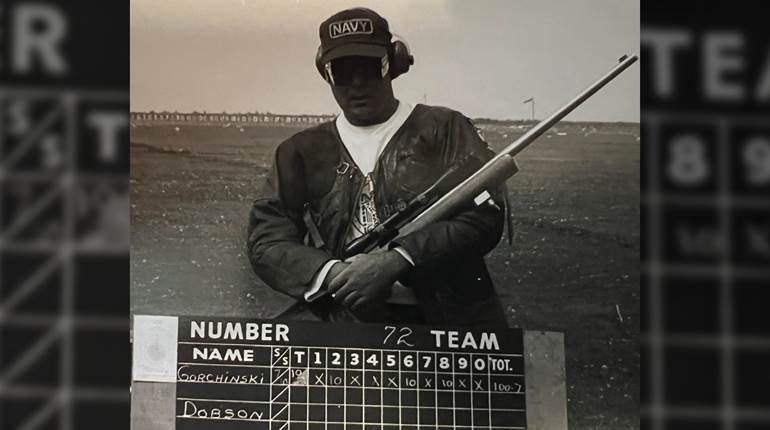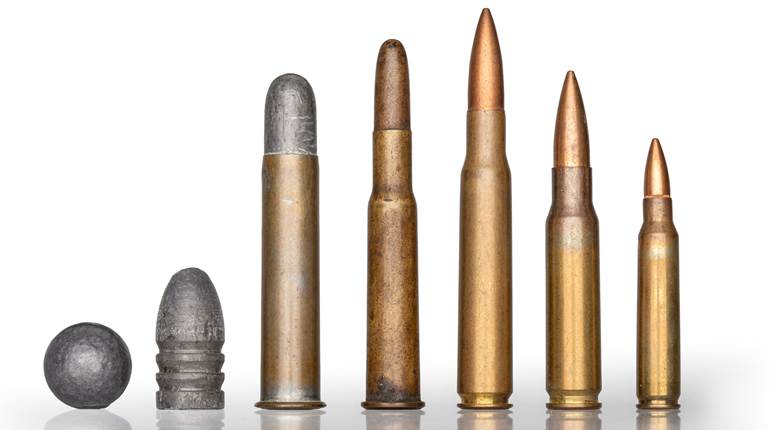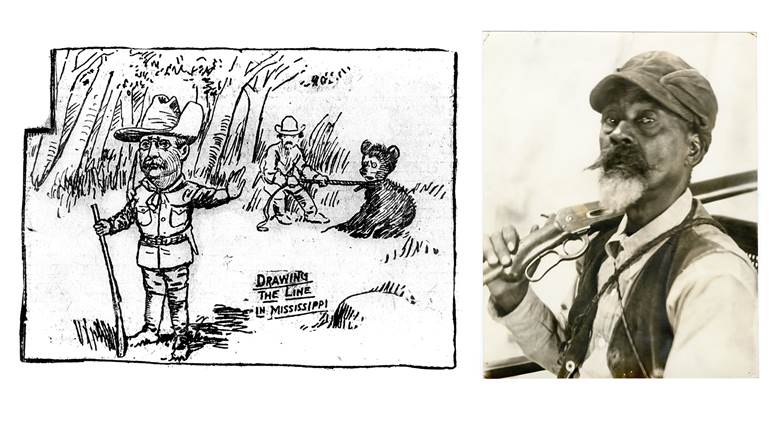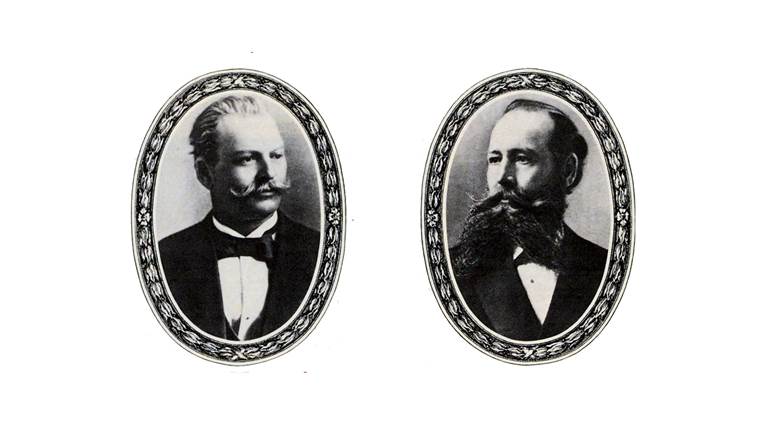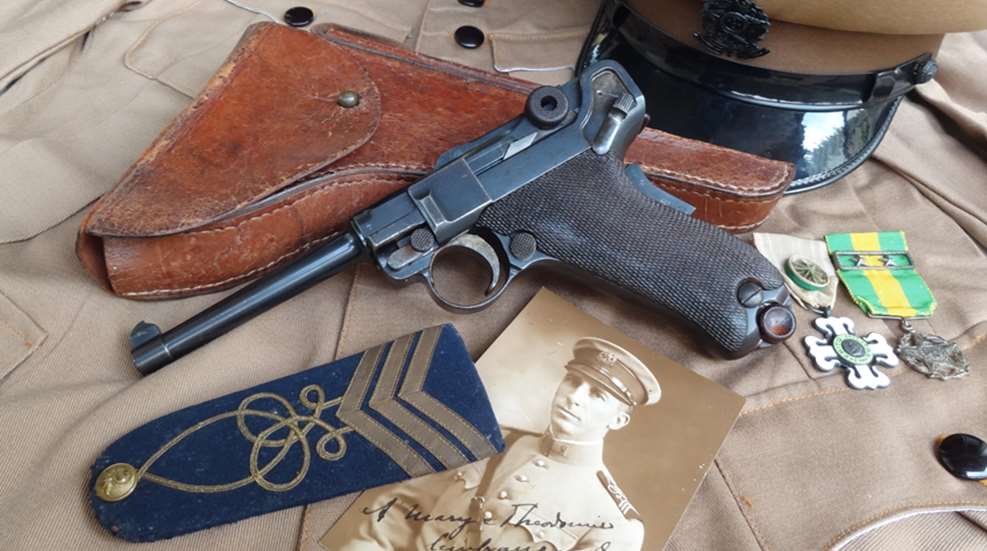
Brazil and its history are more or less unknown in the northern hemisphere. This is especially true of the small arms formerly used by its military forces, and in particular the Brazilian variant of the Luger pistol. This obscure variant was used and revered by Brazil’s soldiers, revolutionaries and bandits alike, making for an unusual and interesting history.
The adoption of the Luger in the early years of Brazil’s “Old Republic” (1889-1930) was a tentative and drawn out process that lasted several years. This was, in part, due to violent uprisings and revolts that resulted from the political instability and financial weakness that followed the bloodless coup that ended Brazil’s monarchy (1889) and began its Republic.
To quell the revolts and uprisings, Brazil’s military forces used obsolete rifles and handguns inherited from the time of the old monarchy. It would be more than 20 years after the Republic was established before modern Mauser rifles and Luger pistols became standard-issue arms and readily available. The exception was a purchase in 1894 of approximately 100,000 Model 1893 Mauser rifles (Brazilian Model 1894). Handguns were not considered as important and were not in great supply.
The handguns inherited by the Brazilian Republic were Nagant Model 1883 and Girard Model 1878 revolvers, both chambered for blackpowder cartridges. These quickly became obsolete with the advent of smokeless powder and recoil-operated, self-loading repeating pistols. In 1897, the Brazilian military conducted unofficial trials of the Borchardt C.93 autoloading pistol. These trials may have been closer to demonstrations and did not result in the adoption of the Borchardt, but they did give the Brazilians an introduction to new firearm technology and German firearm manufacturers. Ultimately, the connection with Borchardt would lead Brazil to the Luger pistol.
The manufacturer of the Borchardt was “Deutsche Waffen und Munitionfabriken“ (DWM). Recognizing the deficiencies and resultant lack of sales DWM, assigned Georg Luger the task of improving the Borchardt. He based his pistol on the Borchardt design, but greatly improved it in all respects, resulting in what we know today as the Luger pistol.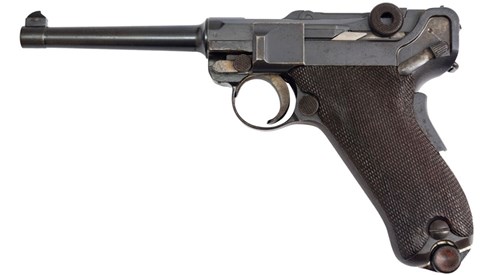
Brazilian Luger right side. Brazil adopted the “New Model” Luger, introduced in 1906, which featured several improvements over the version tested between 1904-1905.
Private Collection Photograph by Paula Korosue.
Brazil’s economy depended on coffee and rubber production from its large plantations. During the early 1900s, its economy improved as a result of increased profits from the export of these commodities (the worldwide demand for rubber had increased due to its use in automotive tires). During this period of prosperity, concerns over the naval superiority of its neighbors, Argentina and Chile, spurred the Brazilian government to allocate funds to purchase new battleships. The South American naval arms race had a positive effect on the acquisition of new small arms for the Brazilian Army.
Increased spending for the Brazilian Navy in the early 1900s opened the door for purchases of new rifles and pistols. The resulting official pistol trials were conducted in 1904 and 1905, and as a result, the Luger pistol was chosen. A letter written by Georg Luger, dated Jan. 14, 1906, to Hans Tauscher, the New York City-based DWM sales agent for the United States, in which he claims the trials a success, supports this. In the letter it is stated that “... the governments of Chili [sic], Brazil, and Portugal have ordered large quantities of our automatic pistols.” The pistol submitted to these trials was the first successful Luger model. Later known as the Model 1900, it was chambered in the .30 Luger cartridge. It had a dished toggle with lock, straight extractor, grip safety, flat leaf main spring and a 4.75” barrel. Although Chile’s contract did not materialize, the Brazilian government would eventually make the Luger its new sidearm. Oscillating coffee and rubber markets brought about drops in prices, which had a negative effect on Brazil’s economy, and by extension, its military budget. Two more years would pass before the purchase of Lugers would be finalized.
By 1908 Brazil’s economy had bounced back allowing for renewed military purchases. In 1908, a Brazilian military purchasing commission, led by Army Marshall Hermes da Fonseca, was formed to negotiate the purchase of munitions in Europe. Among these purchases were contracts with DWM for 400,000 Mauser rifles (Brazilian Model 1908) and 5,000 Luger pistols. The Luger contracted for was an improved version of the model tested at the 1904-1905 trials, called the “New Model” (or the Model 1906 by collectors) and “pistola Parabellum” (Parabellum Pistol) in Brazil. The options selected by the commission were a 4.75” barrel, a grip safety, a newly improved extractor, a loaded-chamber indicator, a rounded breach block, a coil mainspring, full checkering on flat toggles, and a .30 Luger chambering (Brazil never converted or paid to have its Lugers altered to fire 9 mm Luger ammunition).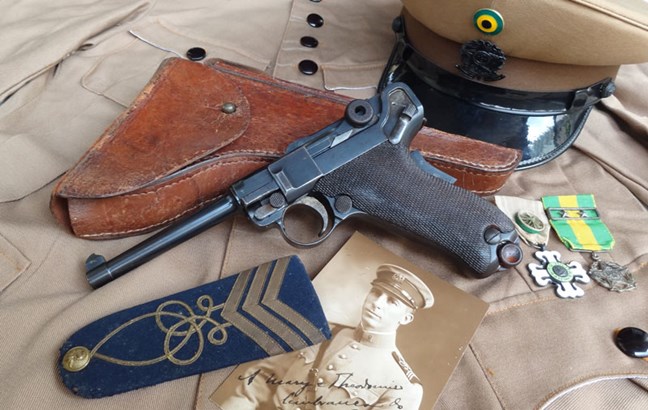 Brazilian Luger with the second type of leather holster issued by the Brazilian Army; 1920s uniform and officer’s cap; Army shoulder board (for a captain); a 1921 dated photo of a Brazilian captain; the Military Medal in Silver (for 20 years of active service), and the Military Merit Order (Officer grade medal). Photograph by Douglas S. Aguiar Jr.
Brazilian Luger with the second type of leather holster issued by the Brazilian Army; 1920s uniform and officer’s cap; Army shoulder board (for a captain); a 1921 dated photo of a Brazilian captain; the Military Medal in Silver (for 20 years of active service), and the Military Merit Order (Officer grade medal). Photograph by Douglas S. Aguiar Jr.
The new Brazilian Lugers had their own serial number range, from 1 to 5,000, numbered on the frame and under the barrel. These pistols were rust blued with small parts having a straw finish, which included the trigger, takedown lever, extractor, magazine release and safety lever. Two unnumbered magazines, a magazine loader and pin punch were also supplied with each pistol. Unique features of the Brazilian contract included extractors marked in Portuguese “CARREGADA” (loaded) which was exposed when a round was chambered. Additionally a Brazilian acceptance mark (“B” in a circle) was stamped on the left side of the receiver above the takedown lever. They did not have the Brazilian crest rollmark on the receiver as is found on the Brazilian Mauser rifles. Currently there are no documents explaining why the crest was not used on the Lugers. It has been speculated that this was due to an attempt at cost savings, or to eliminate a process and speed up deliveries.
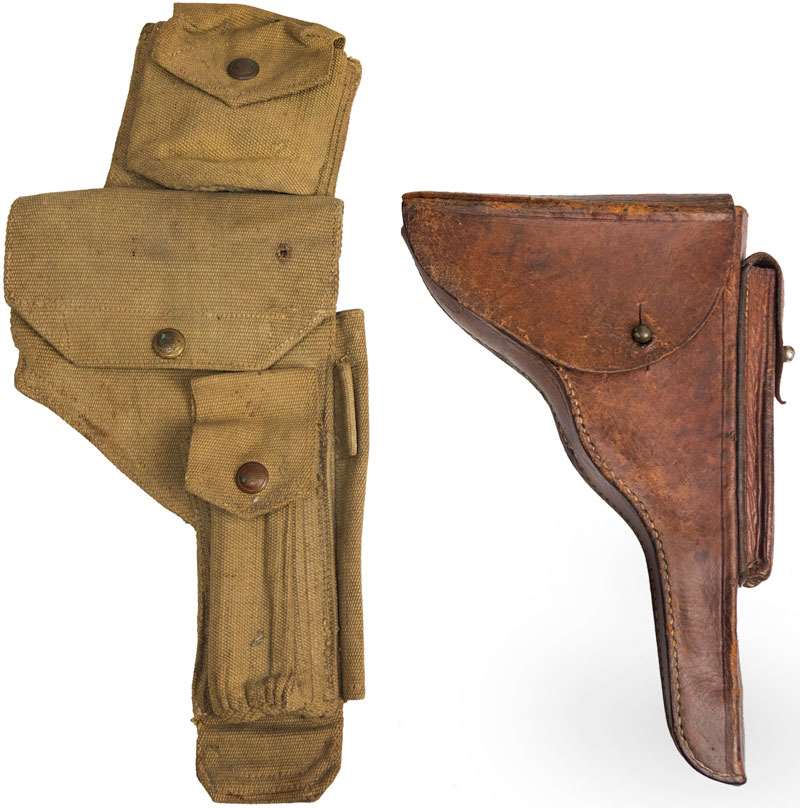
In all, there were three different holsters issued for the Luger by the Brazilian army. Initially delivered with each Luger in 1910 was a commercial-type holster that had a cleaning-rod pocket and one sparemagazine pouch. It was made of leather (soft-shell) and dyed black. It was nearly identical to the Portuguese Luger holster with these exceptions: It did not have any manufacturer markings, lacked a pin punch tool compartment and only had one narrow belt loop. These early holsters wore out quickly and as a result are rarely seen, even in period photographs.
Two improved holster models were introduced circa 1918. The second model was made in Brazil. It was brown with a sturdy hardshell leather body, wider belt loop and one spare magazine pouch. This holster design was successful and remained in use well into the 1930s.
The third and last Brazilian model holster came about as a result of observations of British field gear used during World War I. The utility and durability of the British Pattern 1908 Web Infantry Equipment was appealing and, as a result, a Mills Equipment Company-designed holster was adopted. It had a compartment above the main body for a takedown tool or compass, a cleaning rod pocket, pin-punch compartment and two spare magazine pouches. Although this pattern was primarily used for Lugers, it was also later used with other handguns and remained in service until the 1940s. The holsters originally purchased from the Mills Equipment Company were supplemented by Brazilian-made copies.
The Lugers were delivered to Brazil in 1910 and issued primarily to officers. Non-commissioned officers and enlisted men were issued revolvers. The first impression of the new Luger by the Brazilian officers was not a good one.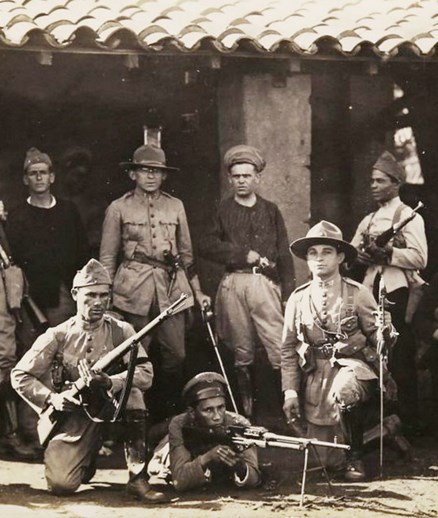
Troops pictured during the 1932 Constitutionalist Revolution. The officer in the middle has a Luger tucked in his belt while the kneeling officer at right has the Mills pattern holster. Image courtesy Gustavo Randi.
The Luger was very different from anything used before by the Brazilian military. Nonetheless, when the Luger was first introduced, formal training was not offered for its operation and care. Poor accuracy, dependability issues and a loss of confidence in the design resulted. Eventually, information for instructors was published, in Army Bulletin nr.214, dated July 5, 1912, titled, “Instruções para o Tiro com a Pistola Parabellum” (“Parabellum Pistol Shooting Instructions”) to teach the proper use, care and maintenance of the Luger. The ensuing training led to improved marksmanship, and as a result, new appreciation for the Luger. A good example of this was an officer using a Luger winning the Brazilian Army Target Championship in 1913.
Shortly after the Luger pistols arrived in Brazil they were pressed into service during the social/religious uprising called the “Contestado War” (1912). Later, they saw more action in the State of São Paulo during the 1924 and 1932 revolutions when used by both the Federal and revolutionary soldiers. 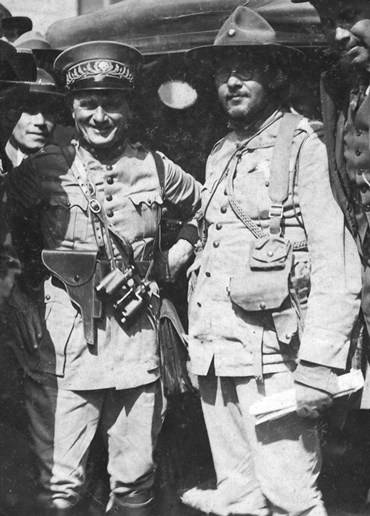
Two officers during the State of São Paulo 1924 Revolution. They sport both Luger holsters then in use by the Brazilian Army, with the hardshell brown holster on the left and the Mills canvas pattern on the right. Image courtesy Brazilian National Agency.
In 1919, a new law allowed the military to lend guns to police forces in poorer Brazilian states. In Brazil, law enforcement of each state is organized as a military force (like Italy’s “Carabinieri” or Spain’s “Guardia Civil”) and were frequently deployed in military actions to counter civil uprisings—resulting in the Lugers being exposed to decades of heavy use. In addition to official government use many Lugers had fallen into the hands of outlaws called “Cangaco.”
The “Congaco” were the Brazilian equivalent to the outlaws of the American Wild West. They terrorized and robbed farmers, landowners and banks in Brazil’s northern states while being persistently chased by the law. During attacks and ambushes, these outlaws seized Lugers from the police and soldiers who pursued them. The Luger made a lasting impression with bandits and the law as both considered it a powerful and accurate pistol. In remote areas where the Luger name was not commonly known it was nicknamed “Parabelo.”
An example of the notoriety gained by the Luger was highlighted when the well know Cangaço bandit, Virgulino Ferreira da Silva, a.k.a., “The Lantern,” and his gang were ambushed and killed by a police patrol. Found in the bandits’ possession were several Lugers, which were displayed with the bandits’ decapitated heads.
As the years passed, the number of Lugers in service dwindled. To supplement handgun supplies the Brazilian Army purchased Smith & Wesson Military & Police and Colt Official Police revolvers in .38 Spl. By the time the Brazilian Expeditionary Force left to fight with the Allies in Italy in 1944, the Luger had already been replaced with Colt Government Model pistols and Smith & Wesson revolvers, both chambered for the .45 ACP cartridge. Even so, Lugers were still in use with rural police units into the 1940s. By the early 1950s, surviving Lugers were sent to army depots for storage before being sold as surplus in the United States and Europe.
After four decades of service in Brazil, the Luger had become an iconic symbol of power in Brazilian popular culture, with the name “Parabellum” appearing in songs, verse, prose and movies.
About the Authors: Douglas S. Aguiar Jr., is the curator at the São Paulo Military Police Museum; Luke Mercaldo is the author of "Allied Rifle Contracts in America."
The authors would like to thank the director of the São Paulo Military Police Museum, Colonel MP (retired) Galdino Vieira da Silva Neto.












